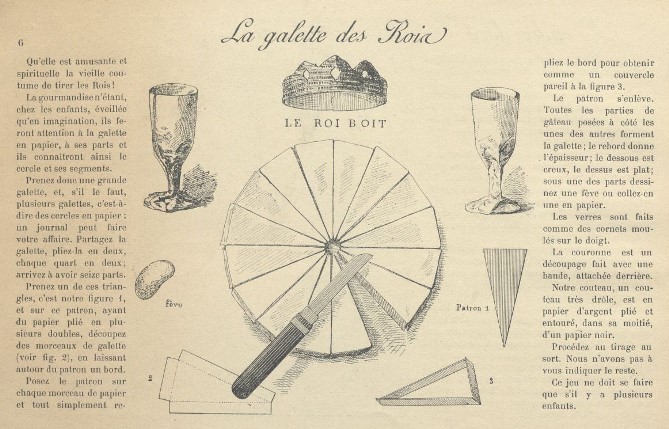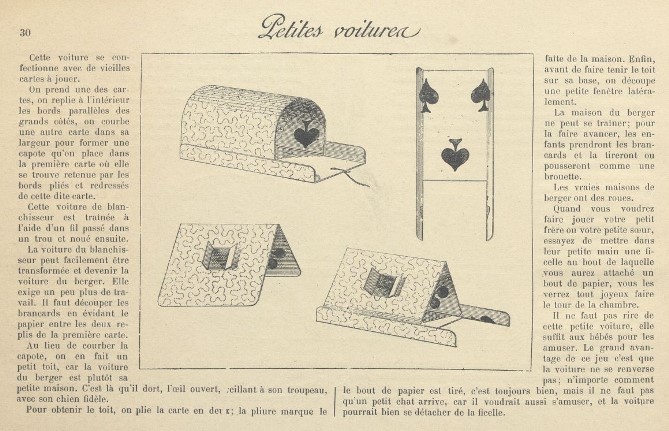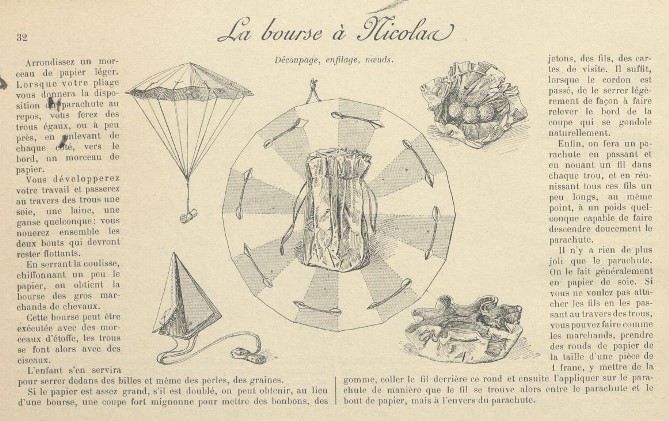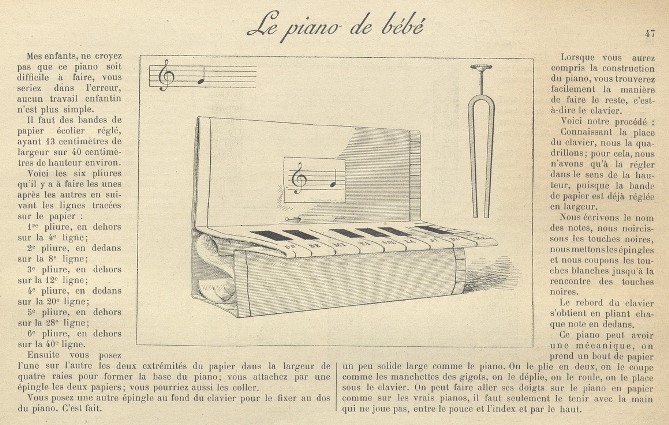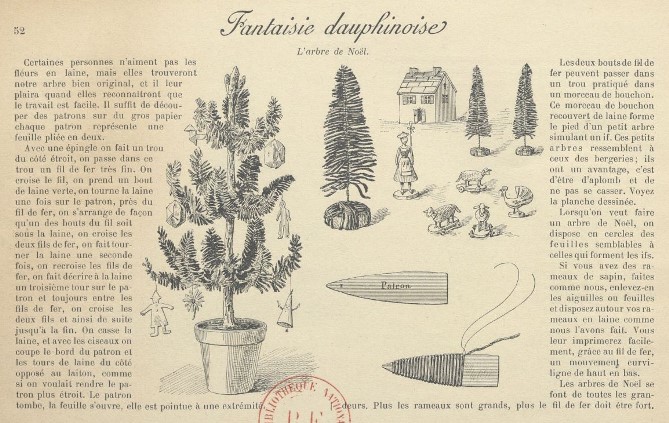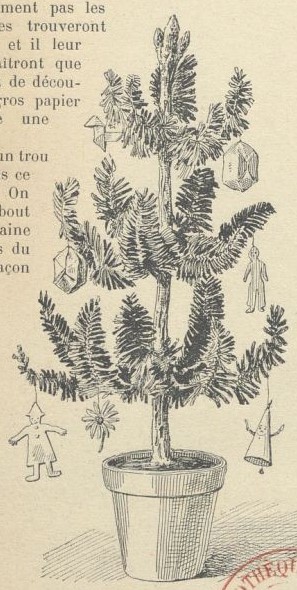| Origami Heaven A paperfolding paradise The website of writer and paperfolding designer David Mitchell
|
|||||||
| Distractions Enfantines by Marie Koenig, 1910 | |||||||
| 'Distractions
Enfantines' by Marie Koenig was published by Librairie
Hachette et Cie in Paris in 1910. It contains a number of
pages containing items relating to paperfolding, the most
significant of which are shown below. A full copy of the work can be accessed at here ********** ********** This page explains how to make a Jewellery Box covered in simple windmill base decorations. ********** This 'Golden Frame' is derived from the simple windmill base decoration used above by means of a few additional folds. **********
The text says that 'The glasses are made by moulding cones with the fingers' ********** These 'Mesdames Les Cloches' are a version of the Don Simon design which are turned into bells by the addition of a clapper made from a large bead or button on a thread. ********** Trick Packages or April Fool Gifts. These are wrappings intended to look as though they contain (top left) a cream cake, pies, St Honore, an eclair, (top right) feathers, artificial flowers, a ladies hat, (centre) a book, paper or chocolate, (bottom left) a picture, a complement, sheet music and (bottom right) a cone for tobacco, powder, salt or pepper. ********** This page is mostly concerned with the knotting of braids from raffia or laces but illiustrates a Newspaper Hat and also states that the sword or sabre is made from folded paper, although no method is given for this. ********** Here the Waterbomb is presented as a lantern. The text suggests using a paper cone to help young children inflate it and also the possibility that young children need not tuck the flaps inside the pockets. It is also worth noting that the writer refers to the upside down waterbomb base (fig 2) as 'le double bateau' (the double boat). ********** The foliage of the orange tree in this picture is made from narrow strips of pleated paper. Most of the text is about the construction the ladder, which is not paperfolding. **********
The top left illustration is the Voiture de Cartes. **********
This page shows how a circle of paper (or cloth) can be used to make a 'Horse Merchants Purse' or the Parachute. ********** The design of the pipes, which are made in two pieces, is attributed to a M. Bebe, a schoolteacher from Chalon-sur-Saone. The stem of the pipe is a rolled allumette or spill, the bowl a paper cone, the bottom of which has been crushed so that it will fit inside the stem. The tobacco is made from brown wool. The illustration also shows paper spills, a simple spill holder and a basic ash tray. ********** These designs are said to have been sent from Nice by the principal of the Rothschild School. The basis of the construction of the buildings is the Playing Card Cube but the material used is advertising cards obtained from shops in Nice (which are of similar proportions to playing cards). The chimneys are simply paper cones. ********** This is a design, somewhat reminiscent of Troublewit, or a lower case 'h' from a doubly pleated paper alphabet, which is developed from a strip of paper pleated in two directions. The author says that the design was folded in front of her by all the children of the 'premiere class de l'ecole maternelle du boulevarde de Belleville, Paris'. **********
This page shows how to make a piano by folding and decorating paper. **********
This page describes how to make a Xmas tree from wire and wool. The picture shows it decorated with a Don Simon figure, Waterbombs and a Cocotte / Pajarita. ********** These two 'muslin cups' are made from crumpled crepe paper. The bases surround cardboard circles. ********** |
|||||||
